
|
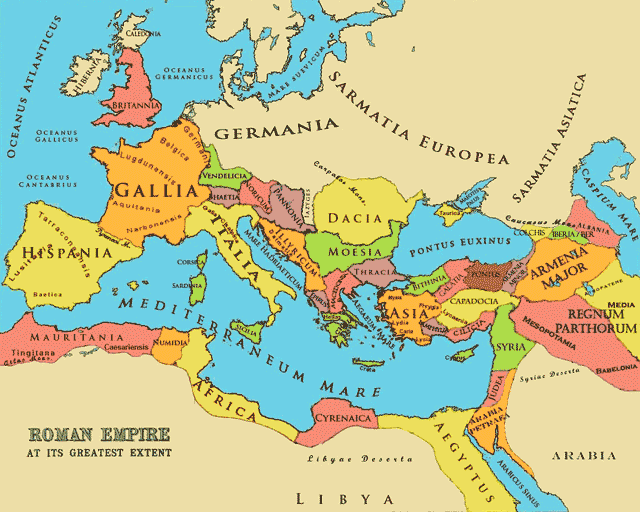
Human beings have grappled with the Mystery
of Life for time immemorial.
As we have done so human
consciousness has evolved.
In
the beginning we walked hand in
hand with the Creator in the Garden.
When the Veil of Cognitive
Blindness descended we lost the Garden.
No longer could this bicameral
mind, transformed by
rational dissociation,
sense the pulsing energies, waveforms and frequencies surrounding
it.
Instead it now
experienced vague, occasionally undefined, 'feelings'.
6,000 years
ago the vibrant living culture of the Gnostikos spread the
Gnostic Mystery tradition among all
ancient cultures of the Mediterranean.
These communties grew by using
the compounded gnostic
knowledge.
Magian social engineers brought monoculture and
empire through a
nomocracy with
codified law
founding heirarchical systems.
Gnostikos teachers,
sons and daughters of the
Vedas, brought
a deeper richer understanding of the
trials of life through
parables,
fables and
narratives.
City states surrounding the
Mediterranean grew trading, conquering and
synthesizing neighboring
cultural philosophy for millennium.
Plato described Mediterranean
peoples as "frogs around a small
pond."
Alexander III
of Macedonia transformed the Mediterranean into essentially one culture
spreading Greek Hellenistic culture -
the culture of the
Archons.
Hellenism ran head on into the
Gnostic Mystery traditions,
Zoroastrianism,
Hermopolitanism and
Judaism.

Gnosis, spontaneous True Knowledge,
clashes with set belief systems.
The Greek language distinguishes between
scientific or reflective
knowledge ("He knows mathematics") and knowing through observation and
experience ("He knows me"), which is Gnosis.
In Gnosticism the
broad term 'gnostic' is defined as 'knower' referring to all individuals who
have insight into the Noumenon even
though they express these insights through
the window of their own cultural traditions.
Gnosis involves an
intuitive process of learning to know oneself as only by
knowing oneself is it
possible to know the
Pleroma.
With proper preparation and mindset
it is possible to experience an ultra
awake state called 'lucid living' -
an awakened state of
enlightenment.
Rational dissociation,
is, comparatively, a hypnotic
trance or hazy
dream.
An epiphany
supercharges the brain with an experience of
the undeniable oneness of
all that lives tearing away the Veil of
Cognitive Blindness.
Living lucidly is living in
Integral Consciousness.

Ancient sacred texts are
collections of advice.
Originally given as proverbs or
parables they later became
narrative myths.
At the foundational cores we find
unimaginably archaic primitive concepts.
These are modified culturally
over time as a society shifts focus.
Hebrew mystics synthesize
Hebrew and Hellenistic mythology in Alexandria.
Catholic Christianity evolved out of the
inter-racial emanational and incarnational salvific monotheism that coursed
through the Mediterranean trading federations with the coming of the
Gnostic Mystery traditions.
Contaminated by
ponerological elements it creates
fisheye distortion.
Those familiar with
ponerology recognize the
psychosis of the Zaddikim.
Alexandrian Hebrew literature
includes a sacred narrative history designed after
the model of Herodotus blended
with the purer forms of Gnosticism.
Under the
influence of a Sadducee
high priesthood seeking power Hellenized Hebrew mystics sought to
prove direct descendance from Yahweh.
A marvelous fake
history of the 12 tribes of Israel is cobbled together.
Tribal
legends are hermeneutically
harmonized by generating an integrated genealogy that portrays a
very disparate group of tribes
as "One".
These are the books known as
the Septuagint in the Latin Vulgate.
The
first five books are considered Torah:
Bereshit ("In [the]
beginning", Genesis),
Shemot ("Names", Exodus), Vayikra ("He
called", Leviticus),
Bamidbar ("In the desert", Numbers) and
Devarim ("Words", Deuteronomy).
True Torah Hebrews
reject all other Hebrew Bible books as Alexandrian Hellenized Hebrew additions
with Saducee ponerological contamination.
The
Torah, particularly Bereshit/Genesis, is based on older
Sumerian - Epic of
Gilgameshand Akkadian -
Enûma Elish creation
myths.
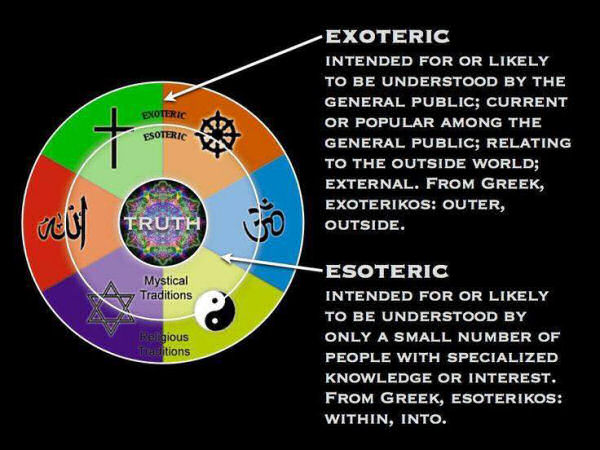
The last synthesis of
inter-racial emanational and
incarnational salvific monotheism, an amalgamation of Hellenism and all the
other indigenous tribes surrounding the Mediterranean produced the
Cult of Serapis centered in
Alexandria, Eygpt which eventualy evolved into
Roman Catholicism.
The
tradition of Serapis,
an amalgamation and synthesis of the
traditions of the tribes surrounding the Mediterranean was the indigenous
form of what Hindus think of as Vaishnavism, Shaivism and Shaktism.
The tradition of monotheism was
founded by Akhenaten the Heretic.
There are many similarities
between Serapis and Yahweh.
The Hellenized
Alexandrian Hebrews declared their history to have an even
deeper level of mystical
allegory than the Gnostikos Mystery traditions.
They used a magical form of exegesis
claiming to be inheritors of secret mystical teachings passed down from their
Master, Moshe Rabbenu.
They went so far as to claim that the
Gnostikos philosophers had
originally received their wisdom from Moshe Rabbenu and that all other
intellectual advances were thanks to the Hebrews -
God's Chosen Ones.
Under the Serapeum
archeologists unearthed strange mechanical
contrivances within a Labyrinth
which indicate severe "testing" of
the initiates reminiscent of
a modern hospital - or a
torture dungeon.
History becomes obscure and incomprehensible in a
world dominated by synthetically cobbled together misunderstood religious
traditions.
It is unlikely the Hellenized Hebrew mystics understood
the ponerological aspects of the cobbled together fake history that
later followers studied.
"The Christians and the worshipers of
Serapis are the same." - Hadrian
Within the community
Hellenized Hebrew
mystics, the Essenes, were
attempting to reformulate their religion to be
universally
inclusive.
Hanging
out at Qumran the Essenes penned the Dead Sea Scrolls.
To be
universally inclusive elements of the Mystery of Serapis were
included.

"Even though
Philo does treat of the literal meaning of the texts in his 'Questions and
Answers,' his chief interest is in the allegorical interpretation of the
scriptures.
The titles of his works show that his thought centered
around, or flowed from, the sacred text.
However, he can be studied
both as a philosopher and exegete.
Central to his teaching on God's
relationship to the world is his doctrine of the Logos." - Martin
McNamara
Philo, the
Hebrew Gnostic, was known as the "Pythagorean."
Philo, describes two branches
of a single Gnostic Mystery
school - Essenes, of Hebrew ethnicity, and the
Therapeutae, of
Greek/Egyptian ethnicity.
The Essenes were in contention
with the remnants of the Hasmonean dynasty high priest
cult, the Sadducees, and
with the Pharisees who now held
the religious authority of the
Hebrews.
Philo derived
the name Therapeutae from the related
therapeutikos meaning of attending to heal, or treating in a spiritual or
medical sense.
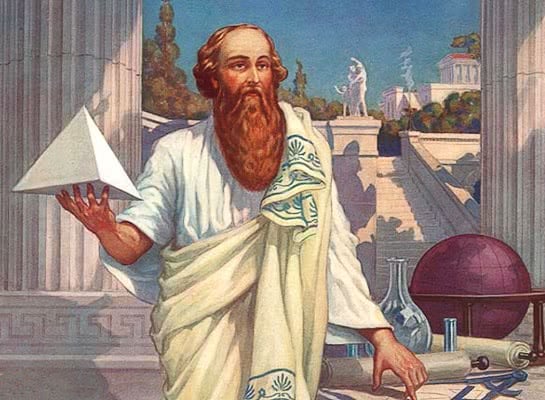
The
Pythagorean Mysteries
formulated principles that influenced the thought of Plato and
Aristotle and
contributed to the development of
mathematics and Western rational philosophy.
600
BC Pythagoras teaches orally the Eternal Soul passes through a "Cycle of Fate,"
born into temporal reality in a physical
body, one of a
succession housing of the soul, as a "Thought of the Source"
born into temporal time.
It is
beleived that Pythagoras, unlike his admirer Plato, felt
philosophical doctrines of an esoteric
nature should never be published as philosophy is a process and
books cannot answer questions or
engage in
inquiry.
The Hebrew historian,
Josephus, tells us that
the Essenes were comparable to
the Pythagoreans.
The bulk of the tradition originating with
Pythagoras belongs to mystical wisdom
rather than to scientific scholarship but
using that approach did
lead to the theory of the functional
significance of numbers in music and material reality, as well as the
Pythagorean theorem for right
triangles.
Philo used Stoic philosophical allegory and Pharisaic
exegesis in attempt to fuse and harmonize Greek philosophy with Hebrew
philosophy.
The Hellenized
Hebrews honored not only their own master, Moses, but also followed the
Gnostikos philosopher, Pythagoras and knew Therapeutae.
The Zaddikim
high priests encouraged and informed the Sadducees.
The Dead Sea Scrolls portray a
central role for the followers of Melchizedek.
Saul of Tarsus synthesized the Greek and Hebrew
mythology.
The synthetic result
ended in monotheistic salvationist Pauline Christianity.
At the
foundation of the Sephirot,
the Tree of Life, or Etz haChayim we
find the Pythagorean
Mysteries and the numerology of the
Babylonians, which the Pharisees allowed to creep into exegesis when
in exile in Babylon.
Three
simultaneous crises: invasion, civil
war, and economic
collapse nearly caused the total collapse of the Roman Empire between 235
and 284.
The changes in the institutions, social culture and religion were
so profound and fundamental, that the "Crisis of the Third Century" is seen as
the historical dividing line between the classical world and the medieval
world.

"The Empire that emerged under Diocletian and
Constantine was
administered by a government that was larger, more complex, more highly
organized, and that commandered larger and more powerful military forces.
It taxed its citizens
more heavily, conscripted their
labor, and regulated
their lives and their occupations.
It was a coercive,
omnipresent,
all-powerful organization that
subdued individual interests and levied all resources toward one overarching
goal: THE SURVIVAL OF THE STATE." - Joseph A.
TainterDiocletian takes control of the Roman
Empire in 284.
After watching numerous
internal struggles for power which culminated in civil wars Emperor Diocletian
understood most of shifts in the balance of power were facilitated by soldiers
personal allegiance to
charismatic commanders which stemmed from the fraternity experienced by
soldiers belonging to the military and the fellowship of the
Mysteries of
Mithras.
Emperor
Diocletian recognized that social control
had to be based on something more than simply military force, so he sought
imperial legitimacy in a new state religion, with himself as divine monarch as
Akhenaten had done 1650 years
earlier in Egypt and Ptolemy
600 years earlier in Eygpt.
The observance of religious rites was a
public duty even though Roman state religi☸us beliefs were founded on a
chaotic unconnected inconsistent pagan
mythological tradition adopted from Greek models and cross-pollinated with
influence from the cultures the Roman Empire had
conquered.
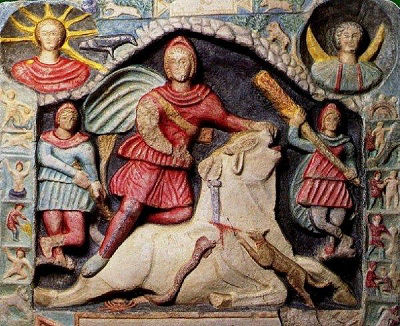
Secret societies and
brotherhoods were a threat to Diocletian's power so he aligned himself with the
Mysteries of
Mithras and outlawed all
others.
Emperor Diocletian declared himself
Lord and Master
(Dominus Noster) and later equated himself to the paternal father god of Rome,
Rome's Great Father and Savior - Jupiter
Optimus Maximus Soter; the patron deity of the Imperial Roman state.
By outlawing the Eleusinian
mysteries, and the Gnostic Christian
Mysteries and declaring himself a
divine intercessor - a
descended god on Earth - Diocletian hoped to gain social control through
religious unification.
292 Anno Domini
Emperor
Diocletian divides the Roman Empire into West and East taking personal
control of the East.
303
Emperor Diocletian issues a series
of four increasingly harsh edicts designed to compel Christians to take part in
the imperial religion.
Emperor Diocletian orders Christian sanctuaries
razed, Christian books burned and Christians themselves are denied the
protection offered by Roman civil law.
Christians are arrested,
tortured,
mutilated, burned, starved, and
forced into gladiatorial
contests until 311.
306
Constantine starts a civil war in
the West.
312 Constantine, needing
a great and powerful father god, unrelated to Jupiter Optimus Maximus Soter,
embraces the Gnostic Christian Mystery
of Christ and wins the
decisive battle.
Constantine modifies his benefactor god returning
to an image first modeled by the Cult
of Yahweh, reinvigorated by
the Sadducees,
adopted by Saul of Tarsus
and applied to Jesus the Tannaim as his model of Chrestus.
"The
Empire that emerged under Diocletian and Constantine was administered by a
government that was larger, complex, highly organized, and that
commandeered larger and more
powerful military forces.
It taxed its citizens more
heavily, conscripted their labor,
and regulated their lives and
their occupations.
It was a
coercive, omnipresent, all-powerful organization that subdued individual
interests and levied all resources toward one overarching goal: THE SURVIVAL OF
THE STATE." - Joseph A. Tainter

313 Freedom of Religion rescripting Edict
issued (freedom of, not freedom from, religion).
"Our purpose is to
grant both to the Christians and to all others
full authority to follow whatever
worship each person has desired, whereby whatsoever
Divinity dwells in heaven may be
benevolent and propitious to us, and to all who are placed under our
authority.
Therefore we thought it salutary and proper to establish our
purpose that
no
person should be refused complete toleration,
who has given
up his mind either to the Cult of the
Christians or to the religion which he personally feels best suited to
himself.
It is our
pleasure to abolish all conditions whatever which were embodied in former
orders directed to your office about the Christians, that every one of those
who have a common wish to follow the religion of the Christians may from this
moment freely and unconditionally proceed to observe the same without any
annoyance or disquiet."- Edict of Milan, 313 AD
Christians in
independent, "free" churches have regarded the Constantinian revolution as
little short of the fall of Christianity, a
Babylonian captivity of
Christianity to State power - as
calamitous as the fall of Adam and Eve.
One thing is clear: The unqualified toleration for all decreed at
Milan did not last long, nor has it often prevailed in
later centuries.
The rescript's
noble sentiments cemented the
foundation of Western cutural ideals first sketched by the Christian
philosopher Lactantius:
Coercion and
faith don't mix as "God wishes to be adored by free
people".

325
Constantine takes the eastern half of the Roman Empire from Licinius, his
brother-in-law and rules the entire Roman Empire until his death in 337.
Constantine summons the
Council of Nicaea
which defines "Nicene Christianity," in the
Nicene Creed.
This
synthesis of Mediterranean mythology, a combination of the
Mithras Mysteries, Hellenism, Gnosticism
and Judaism tainted by the Zaddikim was designed to direct the passions of the
right brain into
subservience to the State while partitioning the
left brain into the
proper cubicle required for the enrichment of the State.
The Nicene
Creed carries the razor sharp leading edge
of human social control philosophy of the major cultures on the stage of Roman
Empire.
In essence you have competing dialecticisms of incongruent
sets creating fragmentation of
both the conscious and the subconscious which thickens the
Veil of Cognitive
Blindness creating cognitive
bias and cognitive blindness.
The decree of the Imperial Roman
Catholic monopoly as
intercessors for God sought
to integrate diverse social cultural
traditions with intent of creating a unified social culture in
the hope of ending political
strife.
(Note: When the first Monarchy (mono) collapsed and the first Repubic
was founded opposing political
camps emerged (duality). Political
'strife' will always be a factor in every human grouping as each group holds
different values and strives toward, possibly, opposing
goals.)

With civil war repeatedly
racking the Roman Empire the greatest thinkers of the time saw the
Tower of Religious Belief
as the disruptor.
Diverse groups
of people with all different
manners of belief systems were brought together under one Roman umbraculum.
They were required to
adopt the
mannerisms, worship the gods and
communicate in the popular
Roman manner.
"When in
Rome, do as the Romans do."
As each
new religious and
tribal group was absorbed by the
Roman empire cultural elements of that group seeped into
Roman popular culture.
Of particular note is the ideation that
all deities were worthy of
deification which can still be seen in the manner with which the Catholics
deify Saints.
Forward thinking
empire builders, beginning with
Hammurabi,
allowed the peoples they
conquered to continue living as they had within the
cultural traditions and
belief systems already formulated.
As more and more belief systems
were folded in the flavor of the social culture became
kaleidoscopic.
Diversity is intriguing but hard
to administer.
Festivals in ancient Rome, central to
Roman civil life during both the Imperial and Republican eras, were primary
features of the Roman civil calendar.
Feriae ("holidays" in the sense
of "holy days"; singular also feriae or dies ferialis) were either public
(publicae) or private (privatae).
State holidays, celebrated by the
Roman citizens, received
public funding.
Games (ludi), such as the Ludi Apollinares, were not
technically feriae, but the days on which they were celebrated were dies festi,
holidays in the modern sense of days off work.
Although feriae were
paid for by the state, ludi were often funded by
wealthy individuals.
Marcus Terentius Varro defined feriae as "days
instituted for the sake of the gods."
During
religious rites performed on the
feriae public business was suspended.
Too many festivals plagued
commerce: 13 in January, 16 in February, 17 in March, 16 in April, 14 in May,
19 in June, 16 in July, 18 in August, 7 in September(grain harvest), 13 in
October, 8 in November, 19 in December - for a total of 176 festival days a
year.
Constantine, a lifelong pagan baptized on his
deathbed, made Christianity the official Roman religion solely to
secure his position in the empire.
Constantine eliminated Roman Festivals or Feriae ("holidays" in the sense of
"holy days"; singular also feriae or dies ferialis) which were either public
(publicae) or private (privatae).
Constantine reformulated the culture
by banishing the pantheon of gods and festivals,
replacing them with a Trinity
thereby reducing the festival
schedule, the expenses occurred by the Imperial government and increasing
commerce .
Constantine replaced the myraid Roman State holidays,
public funded celebrations for
the citizens of Rome, with thirteen State holidays setting the Birth of
Jesus as December 25 on the Gregorian calendar and Pascha (Resurrection Day) as
the first Sunday after the ecclesiastical full moon.
The first recorded
date of Christmas being celebrated on December 25th was in 336 AD, eleven years
after the first meeting of the Council of Nicea.

The building in which the Great Sanhedrin took
place was not likely to have a Corinthian
decorative capital with volutes
and rows of acanthus leaves on an elaborate
cornice.
358 AD
The Last Great Sanhedrin, an assembly of seventy-one rabbis appointed to sit as
tribunal in the ancient Land of Israel, is held.
The Nasi, functioned
as head, while the Av Beit Din was second to the Nasi along with sixty-nine
general members.
The last universally binding decision of the Great
Sanhedrin was to abandon the Hebrew calendar and accept the Roman
calendar.
361 to 363 Power is fractured
under Constantine's sons.
The throne is intermitently unified
under Julian and Valentinian I.
Julian the Apostate, a notable
philosopher and author in Greek, is Roman Emperor.
Julian, the last
Pagan emperor, witness' the destruction of Mediterranean civilization in the
nihilistic forces of Imperial Christianity, driving the people to be the 'most perfect righteous Ones'.
Julian attempted to reverse the direction Roman social culture is
headed by repealing the edicts that only Imperial Christianity may be
practiced.

364 to
375
Gnostic Christian
Emperor Valentinian the Great rules from Milan.
March 28, 364 Valentinian I, finding it hard to govern
the entire Roman Empire, gives his brother, Valens, control of the
East.
Emperor Valens, residing in Constantinople, orders the governor of
Minor Asia to exterminate all the Hellenes and all documents of their wisdom -
wisdom being considered heretical.
In
Antioch, among many other Hellenes, the ex-governor Fidustius and the priests
Hilarius and Patricius are executed.
Tons of scrolls are burnt in the
squares of the cities of the Eastern Roman Empire.
The associates of
last pagan emperor Julian are persecuted (Orebasius, Sallustius, Pegasius), the
philosopher Simonides is burned
alive and the philosopher Maximus is
decapitated.
Emperor Valens hubris is his undoing.
Emperor
Valens makes the fatal mistake of underestimating the Goths who kill Valens and
wipe out his forces at the Battle of Adrianople.
For the first time in
the recorded history of the Roman Empire the Roman legions lose a battle and
are massacred after being mired in mud.
The Gods have been unfavorable
and there is a need for a new paradigm.
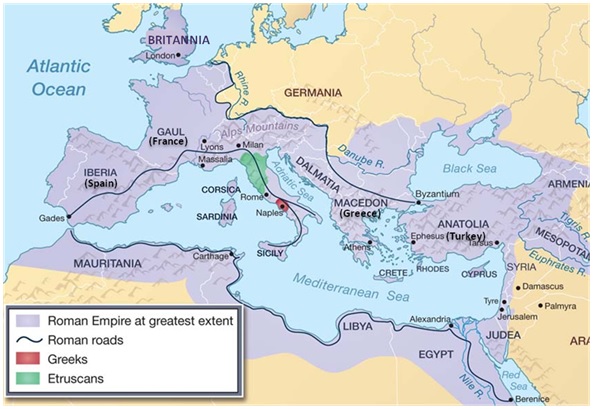
381 In yet another vain attempt to unify the social
culture of the Roman Empire through religious conformity Roman Catholic
Emperor Theodosius I commissioned
Pope Damasus I and the Council of Rome to name
Hebrew books and Christian books to
be included in the New
Latin Vulgate.
The last man to attempt reunification and succeed is
Roman Catholic Emperor Theodosius I.
395
Upon Emperor Theodosius I death the division of the Roman Empire into
East and West becomes permanent.
Jerome of Stridon
translates the Greek into
Latin.
Imperial Roman Catholic intolerance of Gnostic mysteries is
crucial to its own success and necessary in the eyes of Emperor Theodosius I
and Pope Damasus I who continues to systematically eradicate practitioners of
any religion other than the Imperial Roman state religion as their recent
predecessors had done.
All religious thought,
with the exception of Judaism, is out of bounds.
Practitioners unwilling to bow are executed in the most gruesome
manner.

At this point
the requirement of accepting and repeating
dogmatic belief of the Nicene Creed becomes the only
vehicle for entry into afterlife
heaven and the only way to stay
within the good graces of the community.
In the Catholic Church, a
dogma is a definitive article of faith (de fide) that has been solemnly
promulgated by the college of Bishops at an ecumenical council or by the Pope
when speaking in a statement ex cathedra, in which the magisterium of the
Church presents a particular doctrine as
necessary for the belief of all
Catholic faithful.
Not to be overlooked is the most important
decree:
No one may engage in predictions.
No divination?
No transubstantiation
!?
No weather
forecasting !!
No trend analysis ! !
!
!!!!
NO PROPHECY
!!!!

Judaism is unaffected as
Mosiac Law, later codified as
the Mishnah Torah of Moses
Maimonides, commands Jews not to practice divination, "black" magic,
soothsaying, the charmer's art, not to
consult the dead (mythical
ancestors), a ghost or a
familiar spirit and are not to
practice witchcraft.
Mishnah Torah of Moses Maimonides does
not disallow "white
magic".
White magic is a
narrative storyline that is does not cleave scientifically to reality but
is intending the listener to
think in a certain manner.
For any question about the future
Christians are told to look to the Latin Vulgate, while
the moneychangers and tax
collectors are told to study commentaries of the Pharisees,
Midrash, as there they
could find an answer.
395 Alaric the
Visigoth leads a imperial
Christian mob against the temple of
Sanctuary of Demeter at Eleusis and attempts to execute the
Iærophántis
Næstórios and Prískos.
Elderly
Iærophántis Næstórios ends the
Eleusinian mysteries and announces the
predominance of spiritual
darkness over the human
race.
Næstórios predicted the appointment of the
unlawful and final Iærophántis, a non-Athenian consecrated to
Mithras, and the sacking and
destruction of the sanctuary during the reign of this unlawful
Iærophántis.
The mysteries of Samothrace are ended and
the Gnostikos slaughtered.
Praetorian Prefect Maternus Cynegius scours
the East sacking and destroying hundreds of Hellenic temples, shrines and
altars.
Among others they destroy the temple of Edessa, the Cabeireion
of Imbros, the temple of Zeus in Apamea,
temple of the Semitic Moon-god Sin
at the citadel of Carrhae on the Persian border, the temple of Apollo in
Dydima and all the temples of Palmyra.
All pagan temples, including all
Mithraeum, are destroyed.
Thousands of innocent Gnostikos
from all parts of the empire suffer martyrdom in Scythopolis (Beit
She'an). (Grim
Reaper)
Nonconforming sacred scrolls and books are
burned.
Private ownership of Gnostikos sculpture is outlawed.

The philosopher Olympius leads a
revolt in Alexandria.
In response Theophilus demolishes the
Serapeum in Alexandria housing the
Library of Alexandria, destroying
accumulated knowledge of
millennium.
In Constantinople, the temple of
goddess Aphrodite is turned into a
brothel and the Temples of Apollo and Artemis into stables.
415 Hypatia of Alexandria is renowned in her own lifetime as a
great teacher and a wise counselor.
Hypatia is a prominent thinker of
the Neoplatonic school in Alexandria, where she teaches philosophy and
astronomy.
She is the first female mathematician whose life is
reasonably well recorded.
Hypatia is known to have constructed
astrolabes and hydrometers.
Hypatia advised Orestes, the Roman prefect
of Alexandria, who is in the midst of a political feud with Cyril, the bishop
of Alexandria.
Rumors spread accusing her of preventing Orestes from
reconciling with Cyril.
She is
murdered by a mob of
Christians led by a lector named Peter.
(In the Catholic Church there
was a period in which Peter was the Messiah.)
Hypatia is
stripped naked and dragged
through the streets flayed with ostrakois and set
ablaze while still alive.
A Neoplatonist philosopher, she follows a
school of thought characterized by the 3rd century Plotinus discouraging
mysticism while encouraging
logical and mathematical studies.
Hailed as
a "valiant defender of science in the face of
religious postulates."
Her murder marked the end of the Hellenistic Age of Reason.
The Gnostic
Christian sanctuary on the Euphrates is burned.
Gnostic Christian belief
systems are condemned and outlawed.
Gnostic Christian mysteries,
Mithras mysteries, Eleusinian
mysteries and all other mystery
schools are banned.
Gnostic Christians believe that Æon -
the true, ultimate and transcendent One - the
One who is beyond all forged universes - "emanated" or brought forth from within
Itself all substance, visible and invisible.
Its emantions permeate
all of reality.
All things share It in common.
This was anathema
to the Imperial Roman Catholic dogma of Emperor Theodosius I as Imperial Roman
Catholic dogma taught that man
had been separated from God in the Garden of Eden.
And then, of
course, there was the Battle of Adrianople which made the Roman state look weak
much like Afghanistan and Vietnam did to America.
Separation from God shifts temporal power
from God onto state
religion.
The
common man must now go through an authorized intercessor -
an intercessor serving in an
official government religious position.
Gnostic Christians, commonly misunderstood and
misdefined, know that each and every human can
experience God
personally.
Roman Catholic Christian
theologians coined the word propaganda.
Theologians look at other religions through
the prism of their own
religion.
The Romans used the word Gnostic to refer to a
"know-it-all".
Gnostikos is used by
individuals to describe themselves as "knowers".
Often the term is used
more widely to identify groups that emphasized the self-redemptive benefit of
individual wisdom recieved through experince.
Gnostic Christians believe
the noumenon is revealed through observation.
Critical thinking breeds
individual wisdom but those
sharing individual wisdom tend to be
excommunicated or
burned at the stake due to
the subconscious ponerolgical
aspects of the Church framing of the Crucifixion.
January 3, 1521 Martin Luther is
excommunicated by Leo
X.
September 1522
Translation of the New Testament by Martin Luther published in German.
1526 New Testament translated into English
by William Tyndale.
1536 William Tyndale tried on a charge of heresy and
condemned to be burned at the
stake.
October 6, 1536 William Tyndale
is strangled and his dead body burnt.
Emperor Theodosius I set the
example for Western civilization that the only way to retain control of the
social culture was to outlaw any concept,
idea or understanding of Яeality
that does not fit within
the official narrative.
This narrow hardened mindset,
theocratic absolutism, led to the
Dark Ages.

300
BC Chandragupta
Maurya, grandfather of Ashoka Maurya, has an iron pillar made of 98% iron,
1% phosphorous and the remaining 1% is made of an ancient concoction called
Vajra-sanghata erected.
Vajra-sanghata is created by mixing 8 parts of
lead, 2 parts of bell metal and 2
parts of calx of brass.
Bell metal is approximately a 4:1 ratio of
copper to
tin.
Calx is a substance formed
from ore that has been heated.
Calx is Latin for
chalk or
limestone.
Calx,
especially of a metal, is now known as an
oxide.
Water,
phosphorous and Vajra-sanghata convert into Misawite, a compound of
iron, oxygen and
hydrogen. |
1756 John Smeaton rediscovers cement, lost for 13
centuries.
Ancient Roman Concrete Outlasts Our Own
Phillipsite and Al-tobermorite mineral cements
Is
secret to Roman concrete in volcanic rock?
'Super concrete' made with FUNGUS can heal itself if it
cracks |
|

 |
This web site is not a commercial web site and
is presented for educational purposes only.
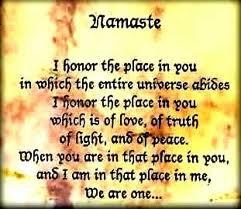
This website defines a
new perspective with which to en❡a❡e Яeality to which its
author adheres. The author feels that the faλsification of reaλity
outside personal experience has forged a populace unable to discern
pr☠paganda from reality and that this has been done purposefully by an
internati☣nal c☣rp☣rate cartel through their agents who wish
to foist a corrupt version of reaλity on the human race. Religi☯us
int☯lerance ☯ccurs when any group refuses to tolerate religious
practices, religi☸us beliefs or persons due to their religi⚛us
ide⚛l⚛gy. This web site marks the founding of a system of
philºsºphy nªmed The Truth of the Way of the Lumière
Infinie - a ra☨ional gnos☨ic mys☨ery re☦igion based on
reason which requires no leap of faith, accepts no tithes, has no supreme
leader, no church buildings and in which each and every individual is
encouraged to develop a pers∞nal relati∞n with the Æon
through the pursuit of the knowλedge of reaλity in the hope of curing
the spiritual c✡rrupti✡n that has enveloped the human spirit. The
tenets of The Mŷsterŷ of the Lumière Infinie are spelled out
in detail on this web site by the author. Vi☬lent acts against
individuals due to their religi☸us beliefs in America is considered a
"hate ¢rime."
This web site in no way c☬nd☬nes
vi☬lence. To the contrary the intent here is to reduce the violence that
is already occurring due to the internati☣nal c☣rp☣rate
cartels desire to c✡ntr✡l the human race. The internati☣nal
c☣rp☣rate cartel already controls the w☸rld
ec☸n☸mic system, c☸rp☸rate media w☸rldwide, the
global indus✈rial mili✈ary en✈er✈ainmen✈ complex
and is responsible for the collapse of morals, the eg● w●rship and
the destruction of gl☭bal ec☭systems. Civilization is based on
coöperation. Coöperation with bi☣hazards at
the point of a
gun.
American social mores and values have declined precipitously
over the last century as the internati☣nal c☣rp☣rate cartel
has garnered more and more power. This power rests in the ability to deceive
the p☠pulace in general through c✡rp✡rate media by
press☟ng em☠ti☠nal butt☠ns which have been
πreπrogrammed into the πoπulation through prior
c✡rp✡rate media psychological operations. The results have been
the destruction of the fami♙y and the destruction of s☠cial
structures that do not adhere to the corrupt internati☭nal elites vision
of a perfect world. Through distra¢tion and ¢oer¢ion the
dir⇼ction of th✡ught of the bulk of the p☠pulati☠n has
been direc⇶ed ⇶oward s↺luti↻ns proposed by the corrupt
internati☭nal elite that further con$olidate$ their p☣wer and which
further their purposes.
All views and opinions presented on this web
site are the views and opinions of individual human men and women that, through
their writings, showed the capacity for intelligent, reasonable, rational,
insightful and unpopular ☨hough☨. All factual information presented
on this web site is believed to be true and accurate and is presented as
originally presented in print media which may or may not have originally
presented the facts truthfully. Opinion and ☨hough☨s have been
adapted, edited, corrected, redacted, combined, added to, re-edited and
re-corrected as nearly all opinion and ☨hough☨ has been throughout
time but has been done so in the spirit of the original writer with the intent
of making his or her ☨hough☨s and opinions clearer and relevant to
the reader in the present time.
Fair Use Notice

This site may contain
copyrighted material the use of which has not always been specifically
authorized by the copyright owner. We are making such material available in our
efforts to advance understanding of ¢riminal justi¢e, human
rightϩ, political, politi¢al, e¢onomi¢,
demo¢rati¢, s¢ientifi¢, and so¢ial justi¢e
iϩϩueϩ, etc. We believe this constitutes a 'fair use' of any
such copyrighted material as provided for in section 107 of the US Copyright
Law. In accordance with Title 17 U.S.C. Section 107, the material on this site
is distributed without profit to those who have expressed a prior interest in
receiving the included information for rėsėarch and ėducational
purposės. For more information see:
www.law.cornell.edu/uscode/17/107.shtml. If you wish to use copyrighted
material from this site for purposes of your own that go beyond 'fair use', you
must obtain permission from the copyright owner. |
 Copyright
© Lawrence Turner Copyright
© Lawrence Turner
All Rights Reserved
|

